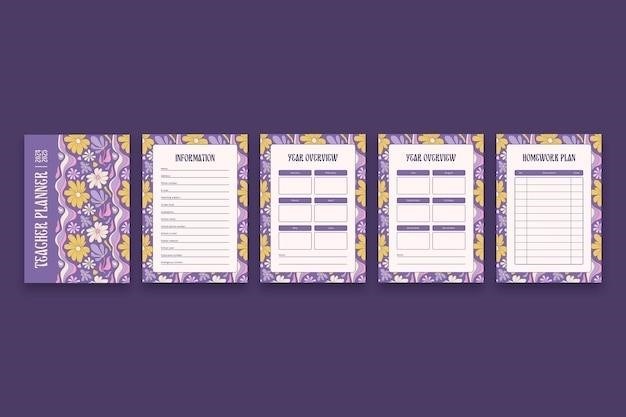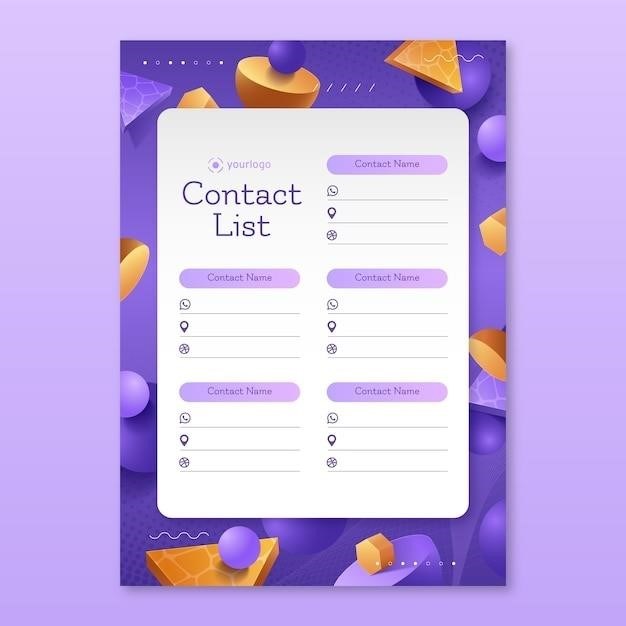Welcome to the Collectors Guide to Disney Snowglobes. Information on over 2900 Disney snow globes. Items listed are presented for information purposes and are not for sale. This guide was originally published on October 31.
Introduction
Disney snow globes are a beloved collectible for fans of all ages. These charming little trinkets capture the magic of Disney in a miniature, snow-filled world. Whether you’re a seasoned collector or just starting your journey, there’s a Disney snow globe out there for everyone. From classic characters like Mickey Mouse and Minnie Mouse to beloved princesses like Cinderella and Snow White, these snow globes offer a delightful way to bring a touch of Disney magic to your home.
This collector’s guide will delve into the fascinating world of Disney snow globes, exploring their history, different types, popular collections, and how to find, value, and care for these treasured keepsakes. Whether you’re looking to expand your existing collection or just starting your search for the perfect Disney snow globe, this guide will provide you with the information you need to embark on a magical collecting journey.
So, let’s take a closer look at the enchanting world of Disney snow globes, where every shake brings a flurry of memories and a sprinkle of Disney magic.

The History of Disney Snow Globes
The history of Disney snow globes is intertwined with the evolution of Disney itself, a journey marked by innovation, creativity, and a constant desire to bring joy to audiences worldwide. While the exact origins of Disney snow globes remain somewhat elusive, their emergence can be traced back to the early 20th century, a time when snow globes were gaining popularity as novelty items and collectible souvenirs.
The earliest Disney snow globes likely featured iconic characters like Mickey Mouse and Minnie Mouse, capturing the hearts of fans with their simple charm and nostalgic appeal. As Disney’s empire expanded, so did the diversity of its snow globe offerings. The introduction of beloved characters from classic animated films like “Snow White and the Seven Dwarfs,” “Cinderella,” and “Sleeping Beauty” further fueled the popularity of Disney snow globes, transforming them into sought-after collector’s items.
Over the years, Disney snow globes have continued to evolve, reflecting the ever-changing landscape of Disney’s storytelling and character roster. From the introduction of new princesses like Ariel and Belle to the captivating characters of Pixar films, Disney snow globes have consistently captured the imagination of fans, offering a tangible way to connect with the magic of Disney.
Types of Disney Snow Globes
The world of Disney snow globes is incredibly diverse, offering collectors a vast array of options to choose from. From classic characters to beloved movie scenes, these miniature works of art cater to a wide range of tastes and preferences. Here are some of the most popular types of Disney snow globes that collectors seek out⁚
One of the most sought-after categories is Princess Snow Globes, which feature iconic Disney princesses like Cinderella, Belle, Ariel, and more. These snow globes often capture the magic of their stories, showcasing elegant castles, enchanting forests, and beloved characters in intricate detail. Another popular category is Character Snow Globes, which feature a wide range of Disney characters, from Mickey Mouse and Minnie Mouse to beloved Pixar characters like Buzz Lightyear and Woody. These snow globes offer collectors a chance to bring their favorite characters home, capturing their personalities and charm in miniature form.
For those who appreciate the cinematic side of Disney, Movie-Themed Snow Globes are a must-have. These snow globes recreate memorable scenes from beloved Disney films, like “The Lion King,” “Aladdin,” and “Beauty and the Beast,” offering a unique way to relive those magical moments. Whether you’re looking for a classic Disney character, a beloved princess, or a memorable movie scene, Disney snow globes offer a diverse range of options to suit every collector’s taste.
Popular Disney Snow Globe Collections
For avid Disney snow globe collectors, building a themed collection can be a rewarding and enjoyable experience. These collections often focus on specific characters, movies, or even eras of Disney history, allowing collectors to curate a unique and personalized showcase of their love for the magic of Disney.
One of the most popular collections is the Princess Snow Globes collection, which features a diverse range of Disney princesses, each with their own unique charm and story. These collections can include princesses from classic Disney films like “Cinderella,” “Snow White,” and “Sleeping Beauty,” as well as more recent princesses like “Moana,” “Elsa,” and “Anna.” For those who love the world of Disney animation, the Character Snow Globes collection is a great option. This collection can include classic characters like Mickey Mouse, Minnie Mouse, Donald Duck, and Goofy, as well as beloved Pixar characters like Woody, Buzz Lightyear, and Mike Wazowski.
Finally, for movie buffs, the Movie-Themed Snow Globes collection is a must-have. This collection can feature iconic scenes from beloved Disney films like “The Lion King,” “Aladdin,” “Beauty and the Beast,” and “Frozen,” allowing collectors to relive their favorite movie moments in miniature form.
Princess Snow Globes
The world of Disney princesses is a treasure trove of inspiration for snow globe collectors. From the classic tales of Cinderella and Snow White to the modern stories of Moana and Elsa, each princess embodies a unique blend of grace, strength, and magic. Snow globes featuring these beloved characters offer collectors a chance to own a piece of their enchanting stories.
Early Princess snow globes often featured classic princesses like Snow White, Cinderella, and Sleeping Beauty, with intricate details capturing the essence of their fairy tale worlds. These globes often showcased iconic elements from their respective films, like Cinderella’s glass slipper, Snow White’s poison apple, and Sleeping Beauty’s spinning wheel.
As the Disney Princess franchise expanded, so did the variety of Princess snow globes. More recent additions to the collection feature princesses like Belle, Ariel, Jasmine, and Mulan, each reflecting the unique beauty and spirit of their respective stories. These modern globes often incorporate elements from their films, like Belle’s enchanted rose, Ariel’s seashell necklace, Jasmine’s magic carpet, and Mulan’s sword.
Collecting Princess snow globes allows enthusiasts to immerse themselves in the timeless charm and enduring magic of Disney’s female characters. Whether it’s a classic princess or a modern heroine, each globe captures a piece of their enchanting story, offering collectors a unique and cherished way to celebrate the enduring power of Disney Princesses.
Character Snow Globes
Beyond the realm of princesses, Disney’s vast universe of characters provides an endless array of inspiration for snow globe collectors. From beloved heroes and mischievous villains to quirky sidekicks and adorable animals, the world of Disney characters is full of charm and personality. Character snow globes offer collectors a chance to own a miniature piece of their favorite Disney moments.
Early character snow globes often featured iconic figures like Mickey Mouse, Donald Duck, and Goofy, capturing their playful spirit and timeless appeal. These globes often showcased classic scenes from their respective cartoons, like Mickey Mouse’s iconic silhouette or Donald Duck’s signature grumpy expression.
As Disney’s character roster expanded, so did the diversity of character snow globes. Modern globes feature beloved characters from animated films, live-action movies, and theme park attractions. These snow globes often incorporate elements from their respective stories, like a scene from “The Lion King” featuring Simba and Mufasa, or a whimsical depiction of Winnie the Pooh and his friends in the Hundred Acre Wood.
Character snow globes offer collectors a unique way to celebrate the enduring appeal of Disney’s diverse cast of characters. Whether it’s a classic cartoon icon or a modern movie hero, each globe captures a piece of their unique personality and charm, providing collectors with a delightful and nostalgic reminder of the magic of Disney.
Movie-Themed Snow Globes
For Disney fans who love a good story, movie-themed snow globes offer a captivating way to relive their favorite cinematic moments. These globes transport collectors into the worlds of beloved Disney films, capturing iconic scenes, characters, and settings with meticulous detail.
Early movie-themed snow globes often focused on classic Disney animated films like “Snow White and the Seven Dwarfs,” “Cinderella,” and “Sleeping Beauty.” These globes featured scenes from the films’ most memorable moments, such as Snow White dancing with the Prince or Cinderella’s carriage transforming into a pumpkin.

As Disney expanded its film repertoire, movie-themed snow globes evolved to encompass a wider range of genres and stories. From the epic adventure of “The Lion King” to the whimsical charm of “Alice in Wonderland,” these globes capture the essence of each film’s unique world. Collectors can find globes featuring scenes from beloved Disney Pixar films, such as “Toy Story” and “Finding Nemo,” as well as live-action adaptations of classic Disney stories, like “Beauty and the Beast” and “The Jungle Book.”
Movie-themed snow globes offer a special kind of magic for collectors, allowing them to cherish their favorite Disney films in a tangible and miniature form. Each globe serves as a reminder of the enchantment and wonder that Disney movies bring to the world, making them a delightful and nostalgic addition to any collection.
Finding and Identifying Disney Snow Globes
The world of Disney snow globes is vast and diverse, making it an exciting but potentially overwhelming endeavor for collectors. Finding and identifying these cherished treasures requires a combination of research, online exploration, and a keen eye for detail.
One of the best places to start your search is online marketplaces such as eBay and Etsy. These platforms offer a wide selection of Disney snow globes, from vintage pieces to modern releases, allowing you to browse and compare prices. Be sure to carefully examine the listings, paying attention to the globe’s condition, manufacturer, and any identifying marks.
Another valuable resource for collectors is online communities and forums dedicated to Disney memorabilia. These communities often feature knowledgeable collectors who can offer insights into specific globes, their history, and their estimated value. Joining these forums allows you to connect with fellow enthusiasts, exchange information, and even find rare or hard-to-find globes.
When identifying Disney snow globes, it’s important to consider the following factors⁚
- Manufacturer⁚ Disney snow globes are produced by various companies, including Jim Shore, Hallmark, and Enesco. Knowing the manufacturer can help you narrow down your search and determine the globe’s potential value.
- Year of release⁚ Vintage Disney snow globes are often more valuable than newer releases. Researching the year a globe was released can provide clues about its rarity and desirability.
- Condition⁚ The condition of a Disney snow globe significantly affects its value. Look for any signs of damage, such as cracks, chips, or discoloration, as these can reduce its worth.
By combining online research, community engagement, and a discerning eye, collectors can embark on a rewarding journey of discovering and identifying the treasures that make up the fascinating world of Disney snow globes.
Valuing and Appraising Disney Snow Globes
Determining the value of a Disney snow globe is a complex process, influenced by several factors. While some globes may be readily available and have relatively straightforward pricing, others, particularly vintage or limited edition pieces, can be more challenging to assess.
One of the key factors influencing a snow globe’s value is its condition. A pristine globe, free from chips, cracks, or discoloration, will typically command a higher price than one with visible damage. The completeness of the original packaging and any accompanying accessories, such as certificates of authenticity or limited edition pins, can also affect its value.
The rarity of a snow globe also plays a significant role in its worth. Limited edition releases, often identified by a unique serial number or production run size, are often more valuable than standard releases. Similarly, vintage snow globes, particularly those from the early days of Disney snow globe production, can be highly sought after by collectors and command premium prices.
To estimate the value of a Disney snow globe, collectors can utilize various resources. Online marketplaces such as eBay and Etsy offer a valuable tool for comparing prices of similar globes that have been sold previously. Researching auction results for comparable snow globes can also provide insights into market trends and potential values.
For more accurate appraisals, collectors may consider consulting with a reputable antiques or collectibles appraiser. These professionals have specialized knowledge of Disney memorabilia and can provide detailed assessments based on the globe’s condition, rarity, and market demand.
Remember, the value of a Disney snow globe is ultimately determined by its market demand and the collector’s willingness to pay. By researching, comparing prices, and seeking professional appraisals, collectors can gain a better understanding of their snow globe’s potential value.
Caring for Your Disney Snow Globe Collection
Preserving the beauty and value of your Disney snow globe collection requires a bit of care and attention. While snow globes are relatively sturdy, they can be susceptible to damage if not handled properly. Here are some tips for caring for your collection⁚
Handle with Care⁚ Always handle snow globes with clean, dry hands. Avoid dropping or bumping them, as this can lead to cracks or chips. When moving globes, support the base and the globe itself to prevent stress on the delicate glass.
Display Carefully⁚ Choose a stable, dust-free location to display your snow globes. Avoid placing them in direct sunlight or near heat sources, as this can cause the colors to fade or the glue to weaken. Consider using a glass-top display case to protect them from dust and accidental bumps.
Clean Gently⁚ To remove dust, gently wipe the exterior of the globe with a soft, dry cloth. If needed, use a damp cloth with mild dish soap to clean the base. Avoid using harsh cleaners or abrasive materials, as these can damage the surface.
Store Properly⁚ When not on display, store snow globes in a cool, dry place. Wrap delicate globes in tissue paper or bubble wrap for extra protection. Avoid storing them in humid environments, as this can lead to mold or mildew growth.
Repair Carefully⁚ If a snow globe becomes damaged, it’s best to seek professional repair services. Improper attempts to repair a snow globe can further damage it.
By following these simple care tips, you can help ensure that your Disney snow globe collection remains in pristine condition for years to come, providing joy and wonder for generations to enjoy.



























